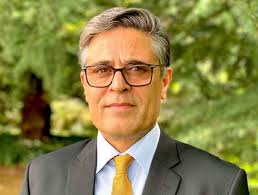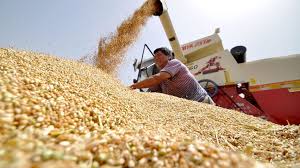Macao bridges China, Portuguese-speaking countries

Henan Daily
Zhengzhou: Ahead of the 25th anniversary of Macao’s return to the motherland, which falls on Friday, national and regional flags fluttered high along a Macao street that houses the China-Portuguese-speaking Countries Commercial and Trade Service Platform Complex, a pivotal hub for activities boosting collaboration between the two sides.
Initiated as a way to cement Macao’s role as a commercial and trade service platform for China and Portuguese-speaking countries, the complex’s launch was announced in Macao in 2016 on the sidelines of the 5th Ministerial Conference of the Forum for Economic and Trade Cooperation between China and Portuguese-speaking Countries, also known as Forum Macao.
The first phase of the complex was completed in 2019, which marked the 20th anniversary of Macao’s return to the motherland.
The complex was one part of President Xi Jinping’s inspection tour to Macao that year to celebrate the anniversary.
While visiting, Xi recognized the complex as giving a fresh boost to the development of the service platform.
The subsequent five-year evolution saw major scale-ups of the complex as the regular meeting venue for Forum Macao and as a multifunctional facility that houses the Commerce and Investment Promotion Institute and the Supporting Office to the Permanent Secretariat of Forum Macao.
“It provides excellent venues for institutes based in the city dedicated to propelling commercial and trade cooperation between China and Portuguese-speaking countries, having greatly facilitated their daily operations and event hosting,” said Ji Xianzheng, secretary-general of the Permanent Secretariat of Forum Macao.
Data released by the General Administration of Customs shows that China’s trade in merchandise with Portuguese-speaking countries in the first 10 months of 2024 reached $191.2 billion, a 6 percent year-on-year increase.
The latest slate of high-profile events hosted in the complex included the sixth edition of the Ministerial Conference of Forum Macao in April.
Ji hailed the forum as among the most pronounced accomplishments in advancing cooperation between China and Portuguese-speaking countries, as it enables high-level intergovernmental exchanges between China and these countries.
Ji highlighted the Strategic Plan for Economic and Trade Cooperation (2024-27) hammered out at the ministerial conference in April as a blueprint for future actions to drive more multilateral partnerships.
The plan clarified key fronts for collaboration, encompassing trade and investment, industry, human resources, medical care and healthcare, as well as education and cultural affairs.
Asked about the secretariat’s future priorities, Ji emphasized its resolve to enhance financial services, promote technological exchanges and build a joint mechanism to give full play to Macao’s role as a cooperation platform for China and Portuguese-speaking countries.
“The platform role that Macao aims to play is multidimensional in nature, requiring support from many relevant parties, not just the central and regional governments, industry associations and even private think tanks,” said Ji, who attended the 6th Meeting of the Forum Macao China Follow-up Action Committee, which was held on Dec 3 in Beijing.
“Our next step will be briefing Portuguese-speaking countries on the work we have been carrying out, gathering pace for more solid implementation of the strategic plan that was charted,” he said.
The complex, whose Pavilion of China-Portuguese-speaking Countries Commercial and Trade Service Platform was unveiled in 2022, and which features several meeting and activity facilities, is also conducive to deepening trade cooperation and people-to-people exchanges.
The pavilion, covering an estimated 1,800 square meters, is one of the Commerce and Investment Promotion Institute’s major recent endeavors to create more commercial and business ties between China and Portuguese-speaking countries.
Kathy Lam, a Permanent Secretariat staff member who works as a tour guide in the pavilion, said she always likes to introduce visitors at the onset to the pavilion’s logo, which she described as epitomizing the pavilion’s core vision.
According to Lam, the logo is inspired by the first two strokes of the Chinese character he, meaning “joint”, which is also the first character of the Chinese term for “collaboration” and resembles two clasped hands.
Seven areas of the pavilion present a panorama of the concerted work of China and Portuguese-speaking countries, starting with multimedia displays of relevant preferential policies, supportive programs and collaboration milestones, and topped off with an exhibition of more than 2,000 products from Portuguese-speaking countries. Each item has a QR code for accessing information about the supplier.
Lam said the pavilion, which is open to the public, was warmly received by companies on the Chinese mainland that seek to expand operations to Portuguese-speaking countries.
Ji, the secretary-general of the Permanent Secretariat of Forum Macao, said the complex also hosts themed workshops for government officials from Portuguese-speaking countries as well as experts. The workshops touch upon many areas of collaboration, including traditional Chinese medicine, and more are planned in fields such as the digital economy, green development and the blue, or ocean, economy.
More people have begun to hear about the complex, which “has become one of Macao’s new landmarks”, Ji added.





